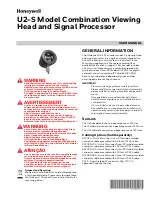
CHAPTER 17 |
120
GETTING THE SOUND YOU WANT
17
Getting the Sound You Want
Quality v. Loudness
Omnia.7 is capable of providing sound quality superior to nearly any other processor available today, and is equally
capable of being louder than the competition, too.
If loudness is your primary goal, you will find that you can match the level of your current processor while getting
a much cleaner on-air sound. If high-quality audio is your goal, you will be able easily achieve that goal and get the
extra benefit of increased dial presence.
Omnia.7 truly minimizes the impact of the classic “quality v. loudness” trade-off by employing processes like
“Undo” and an advanced psycho-acoustic distortion-masking clipper, but bear in mind that NO processor can
eliminate that compromise completely.
The trade-off between quality and loudness is still determined primarily by the settings of the Limiters and
Clippers. Both processes can add to dial loudness, but each does so in a different way, with different-sounding
results (and, if used to excess, different sounding artifacts).
The added short-term density provided by peak limiting can still make audio sound dull or overly-dense and create
intermodulation distortion, and a little still goes a long way. The amount of limiting action is somewhat dictated by
the program material itself. Audio that is already dense and has a high average level – even after being processed by
Undo – will still cause less peak limiting than material that is more open with lower average levels and higher peak
levels.
For example, almost any poorly mastered current CD that’s already been squashed down and has only a few dB’s of
dynamic range already is not going to get the limiters moving – but a well-mastered Steely Dan song will!
Excessive clipping, on the other hand, creates harmonic distortion and can make things sound “edgy” or “torn.”
It is imperative to remember that even when all-out loudness is your goal, there will come a point when driving the
clippers harder will not create additional loudness but will create more distortion,
and there is no benefit to going beyond
that point.
Achieving a High Quality Sound
When all-out loudness isn’t your primary processing goal, and you are willing to give up just a bit of dial dominance
in the name of quality, here are some suggestions to help you achieve that goal:
♦
Reduce the Clipper Drive (AM core) or Final Limiter Drive (HD core) in 0.25dB steps until you reach
the point where the quality no longer dramatically improves, but you’re losing too much loudness - then
go back up a notch. It’s surprising how much a small change can open up your sound without giving up
much in the way of loudness.











































